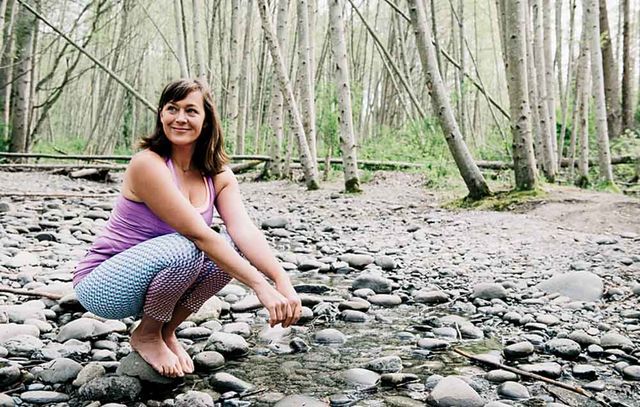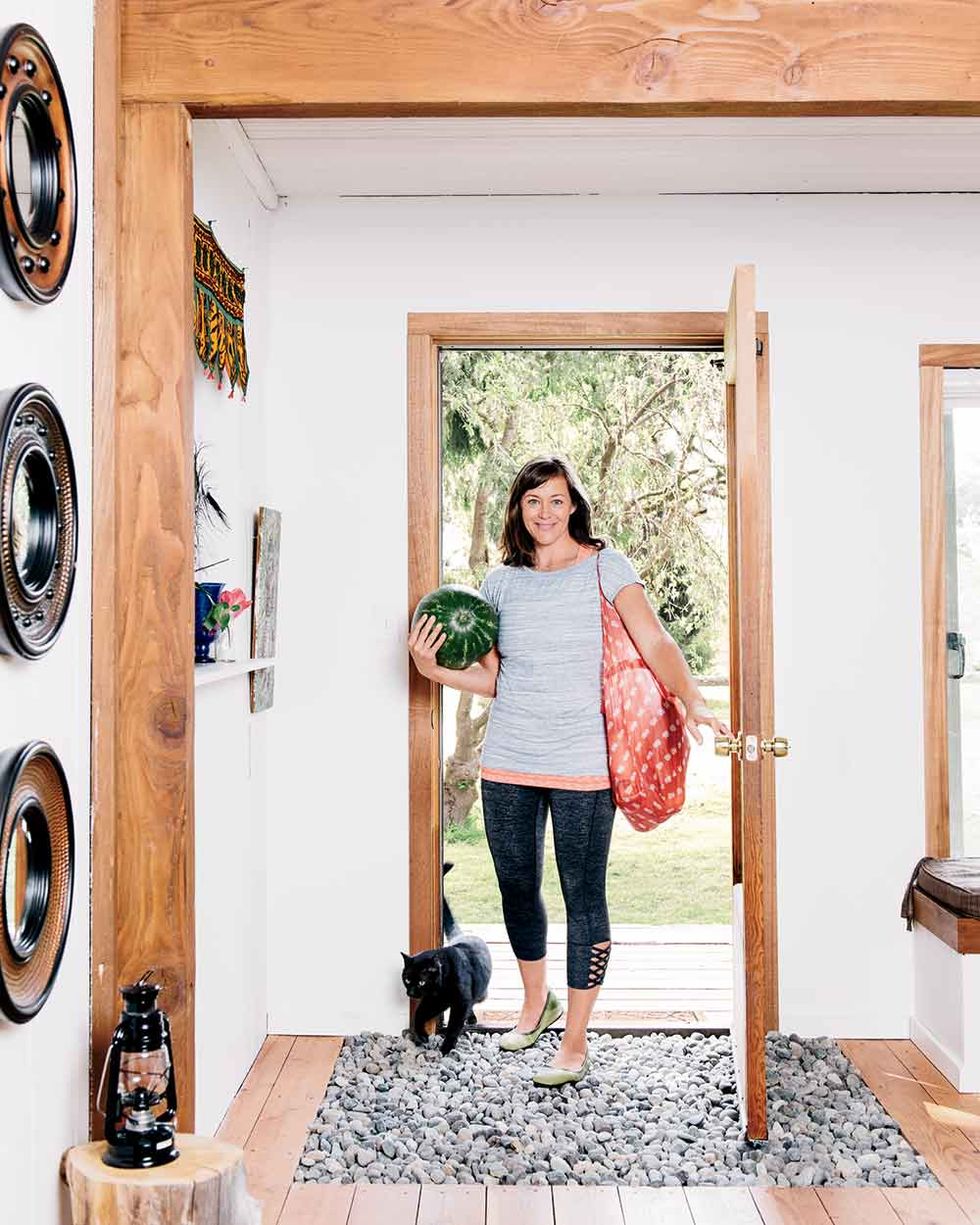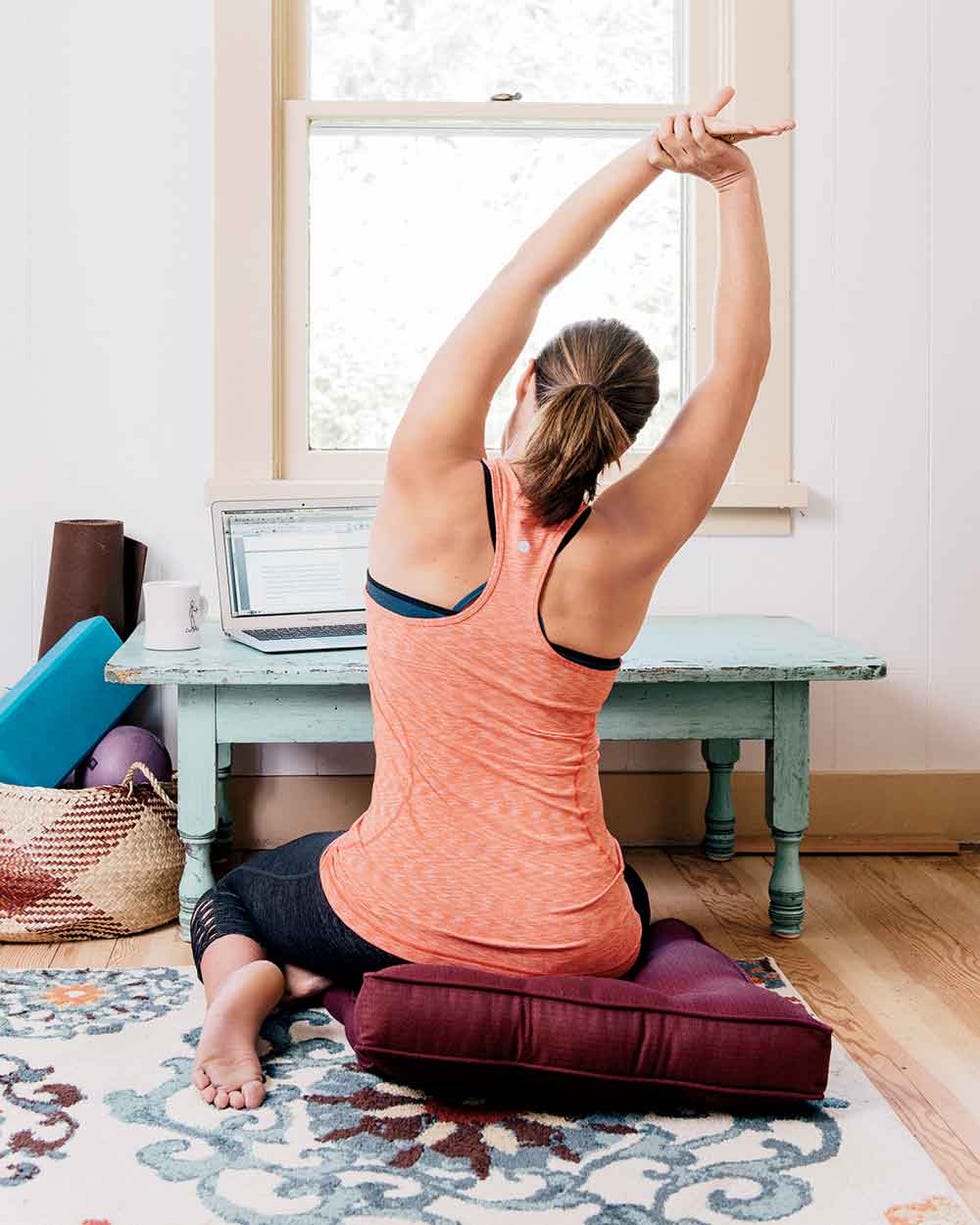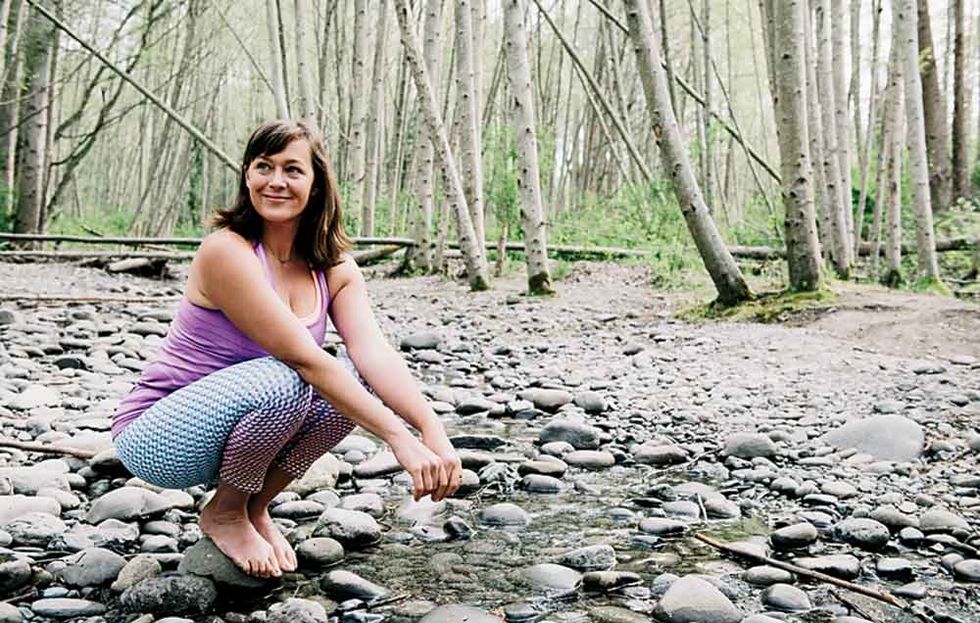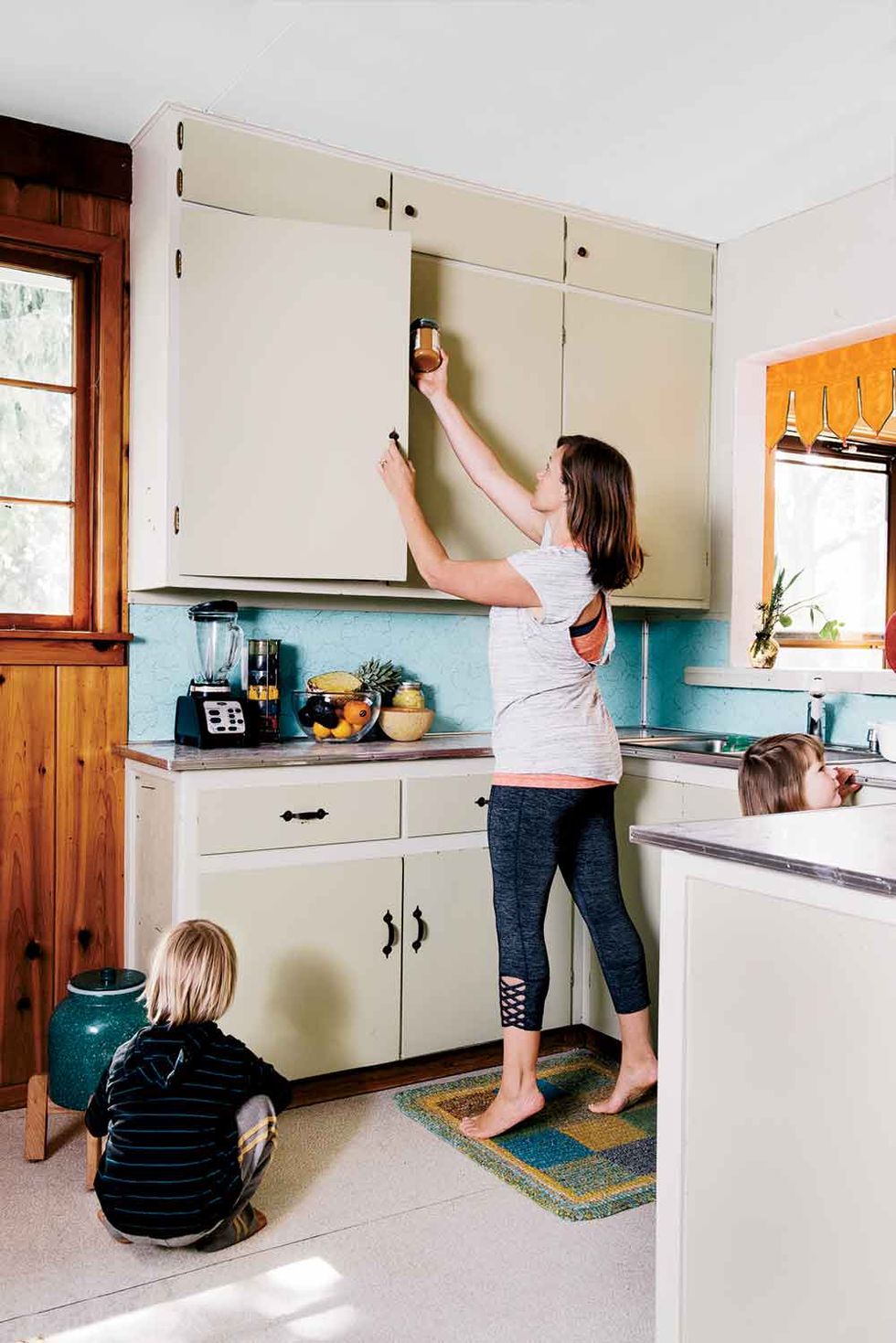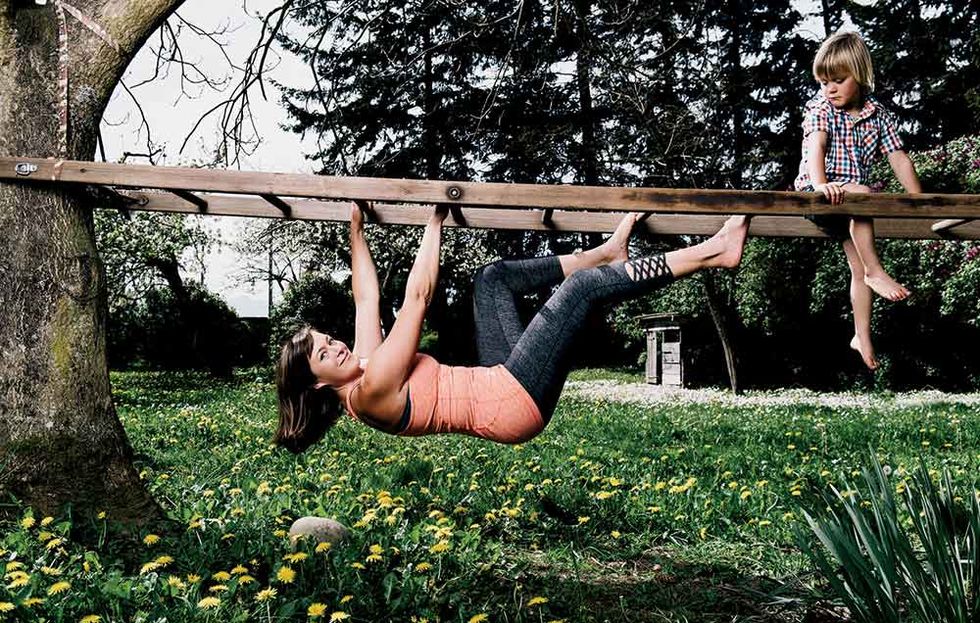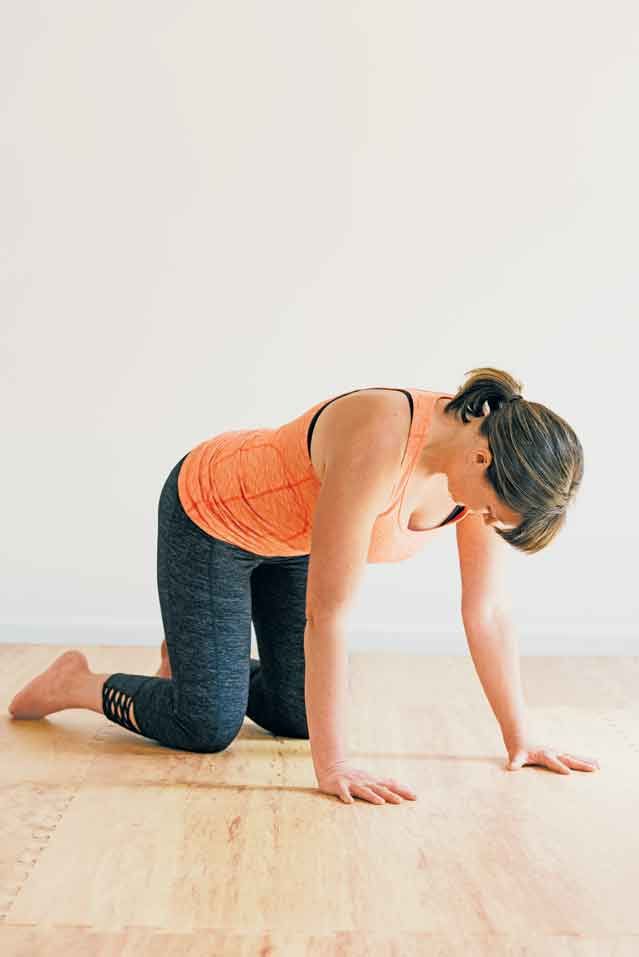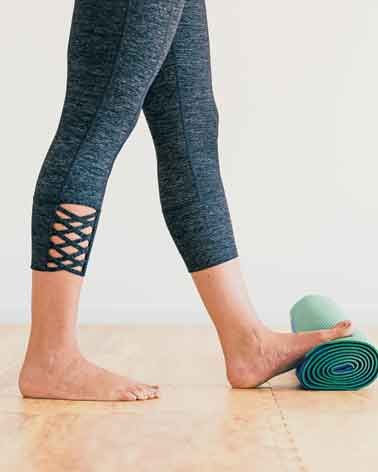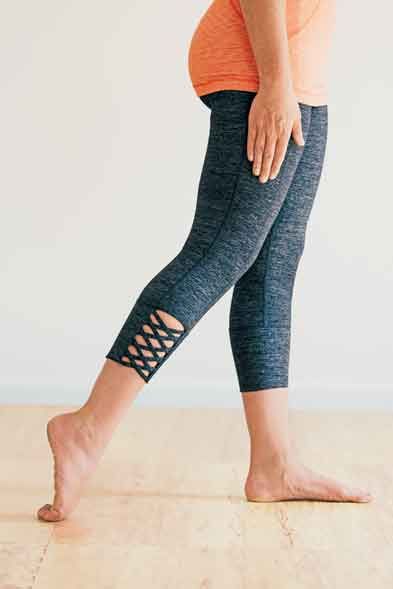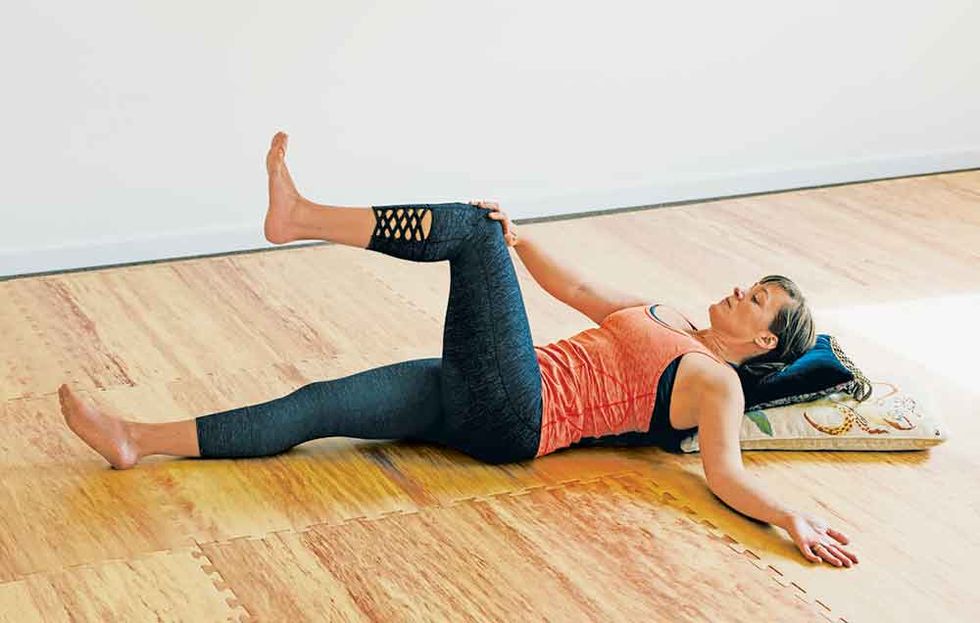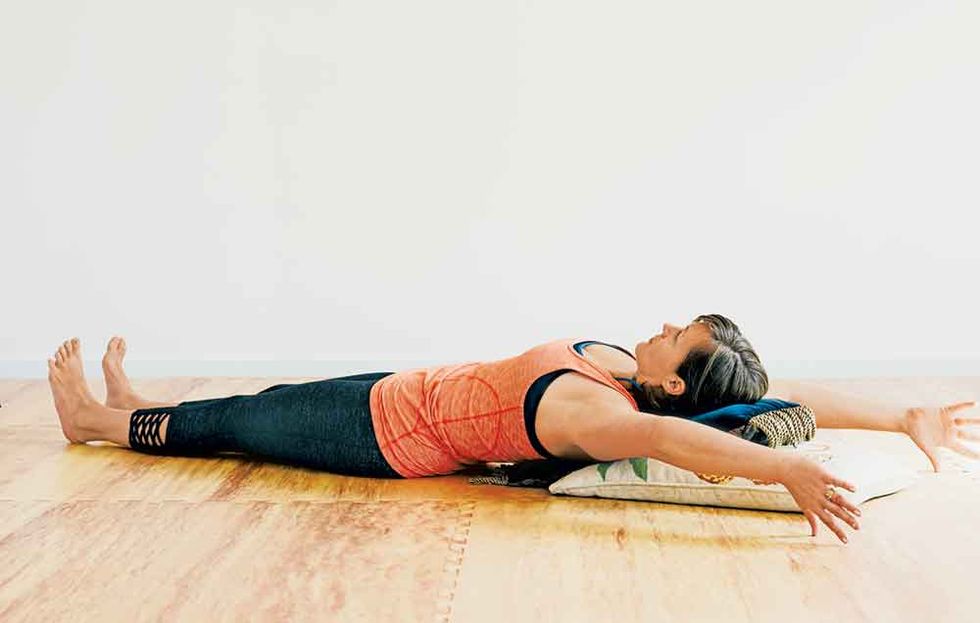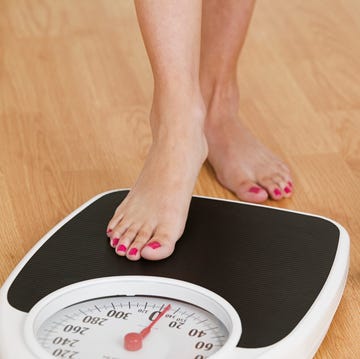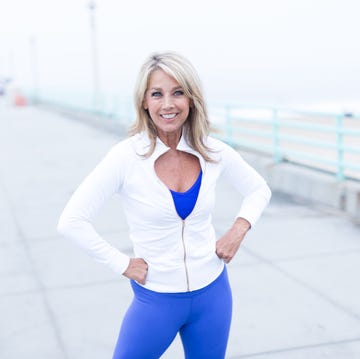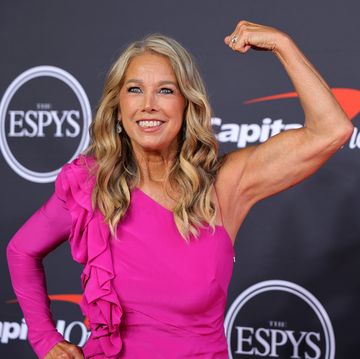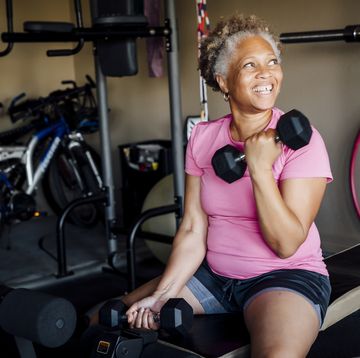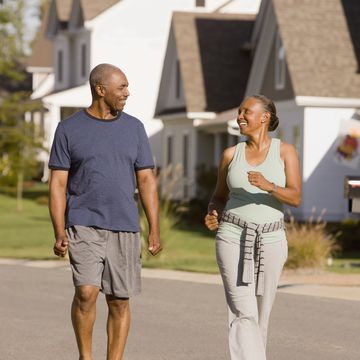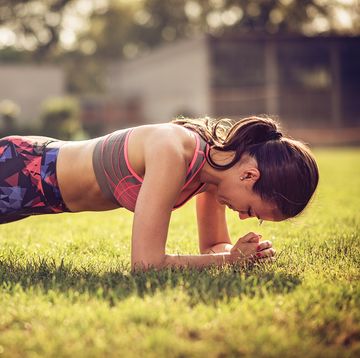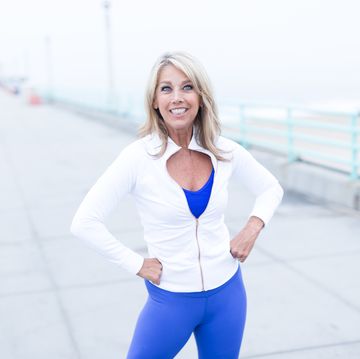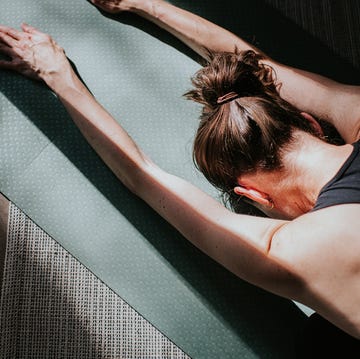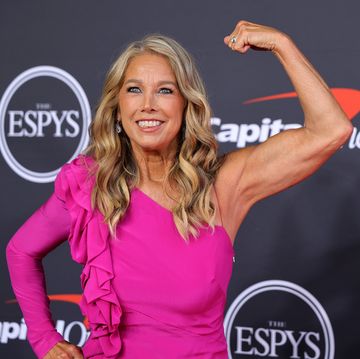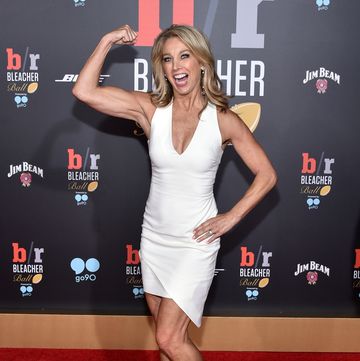Most days of the week, before the rest of my family is out of bed, I meet a friend for a morning walk. We bring our coffee and chat while our bodies slowly wake up. I don't wear sneakers—just simple, minimal shoes that allow me to feel the ground beneath my feet. My toes and arches respond to the terrain, bending and flexing as we wind our way through town and stretches of open field. When I get home, I make breakfast for my two young children, squatting down to grab the dishes I've deliberately placed in low cabinets and stretching up for the ingredients I keep on higher shelves. Later, I'll duck into our backyard to haul water for the chickens or do a little gardening before sitting cross-legged on the floor to work at my low desk. I answer emails, write, or do whatever the day calls for, making sure to stretch, change positions, and take a 2-minute walking break every 30 minutes. (See exactly how walking affects your body.)
There was a point in my life when I thought these simple, gentle movements were a waste of time. All through high school and college, I was an intense exerciser. For at least 60 minutes a day—between all those hours in class or studying at a desk—I either ran, swam, strength-trained, or taught some form of aerobics. While I certainly won the respect of my friends and the title of "healthiest" family member, I couldn't escape the nagging truth that I didn't feel healthy. I was capable of amazing cardiovascular feats, but my body felt, well, old. I had chronic lower-back pain, my hips were achy and tight, and I had to wear a knee brace to exercise. One day as I bent down to push an ottoman across my living room, my back gave out. I was only 30 years old!
The more I worked with my personal training clients, the more I realized I wasn't the only "fit" person living in a body sounding alarms in the form of pain or illness. Often, despite meeting or exceeding the recommendation of 150 minutes of moderate-intensity activity per week, millions of us don't feel well in our bodies.
The more I compared my life with the lives of hunter-gathers, the more I realized that convenience was slowly debilitating me.
It wasn't until I went to graduate school and studied biomechanics on a cellular level that I had a life-changing realization: The reason I was in pain was because I'd been thinking of activity too generally and hadn't been moving in the way my body needed. I'd spent a lifetime believing that as long as I did some form of exercise for at least 30 minutes a day, I'd be healthy. I was surprised to discover that movement is far more nuanced. In fact, the specific movements we feed our bodies can be as vital as the specific foods we eat for better health—and the general feeling of being "too old to move" is fueled not just by lack of movement but by lack of nutritious movement: the kind that includes all the bends and squishes our cells demand in order to function optimally. My movement diet was the equivalent of eating nothing but apples (the same workout I did day in and day out) and candy bars (the time I spent sitting). (Try these 12 gentle hip-opening yoga poses.)
When I applied this new view to my own exercise habits, I realized that, like most Americans, I was severely movement malnourished. My 60 minutes of exercise a day had felt sufficient until I stacked it up against the other 1,380 minutes I spent commuting, working, lounging, sleeping, or doing some other form of sedentary behavior. It was humbling to admit, but I was nothing more than an active couch potato (or, to use the more scientific term, actively sedentary). And when I did move, I wasn't moving enough of my parts.
If I was going to feel better, I needed to nourish my body with movement throughout the day—not with a single workout.
Human movement diets weren't always so limited. Before the age of convenience, a wide variety of movements were necessary for sustaining life. Finding, capturing, and collecting food and water required all-day effort that used all the muscles and joints in many different ways. Today, a moment on the phone can secure food, delivered right to our door, and instead of squatting to rest from a day of hunting and foraging, we plop onto our sofa after hours of sitting at a desk. The more I compared my "active couch potato" life with the life of a hunter-gatherer, the more I realized that convenience was slowly debilitating me.
Make Your Walk More "Nutritious" Walking is one of the easiest ways to nourish your body, but always following the same path and wearing stiff shoes can prevent all your cells from getting the movement they need. These simple tricks from Katy Bowman can turn an average stroll into a superfood. Add Terrain Add Texture Add Squats |
I decided that if I was going to feel better, I needed to nourish my body throughout the day—not with a single workout "meal" but with the whole-body movements that used to be key for our survival but have gone missing from our modern environments. These include squatting, walking (both short and long distances, in minimal footwear, and over varying terrain), getting down to and up from the ground, climbing, and carrying. Done regularly, these movements act like oil to our Tin Man bodies, strengthening and remobilizing the hands, wrists, elbows, shoulders, core, spine, hips, knees, ankles, and feet. To function optimally, we need them just as much as we need protein, carbs, and healthy fats. I began to think of these movements as movement macronutrients.
I decided to incorporate the squat first—but found that I couldn't do it. A lack of full knee and hip use had left me with sore knees, tight hips, and stiff calves that wouldn't allow it. Likewise, when I wanted to hang from the monkey bars at the park, I kept falling off. And my arms, with their ninja-like keyboard skills, couldn't carry two bags of groceries the mile home from the store without tiring. I quickly realized that to give my body (and my clients' bodies) the macronutrients they needed, I had to break large movements into smaller ones to mobilize and strengthen certain weak areas. To do this, I developed corrective exercises that I refer to as movement micronutrients—components of a macro-move that are easier to swallow, like taking a few vitamins versus consuming an entire meal.
Doing these simple stretches and strength builders addressed those body parts that, in our culture, are most likely to be cellularly sedentary: tight hamstring and calf muscles, adapted to shorter lengths as a result of sitting and wearing heeled shoes; hips that don't extend fully and therefore limit how much the gluteus muscles work when we walk; feet, stiff from years of wearing shoes; and shoulders, immobile and achy from having to do almost nothing. Within a couple of months, I began noticing positive changes in my body. Soon, I reintroduced the macro-moves and found I was able to squat deeper without knee pain. With more work, I was able to cross the monkey bars, first once and then back and forth multiple times. I gave these daily movement multivitamins to clients and saw again and again the positive impact they made on their bodies and quality of life.
Eventually, the entire way I viewed activity changed. I no longer saw exercise and movement as identical, and I started encouraging my clients and then thousands of others through my Nutritious Movement website and blog to do the same. While very few of us have the luxury or the desire to devote a large part of our day to exercise, we are capable of moving and repositioning our bodies in small but powerful ways 100% of our waking hours.
Each change added more movement to my life and left my body feeling stronger, younger, and healthier than it had been the year before.
Breaking the sedentary habit isn't easy, but when I started thinking of "convenience" as "takes less movement," I began choosing the less convenient path—sometimes literally, walking on the bumpy, unpaved path instead of the smooth concrete—more often. The more I did it, the more I understood that the "convenient" option is not more convenient for my health. As a result, my physical activity became more nutrient-rich, and I began to feel better.
Over the years, my commitment to a movement-based lifestyle has deepened. As my family responsibilities increased and life became busier, I had to find ways to make nutritious movement an even more integral part of my day. At first, I made simple changes, like reorganizing my cabinets to force myself to reach and bend for the items I used most often or walking instead of driving to the grocery store to grab a few items and carrying them home. I swapped high-intensity workouts for one long walk in the morning and shorter walking breaks throughout the day, and I made the switch from stiff, heeled footwear to shoes with minimal soles that allowed the muscles in my feet to move more. (Looking to up your steps? Here's what 10,000 steps a day really looks like.)
Just as clean eaters' taste buds change when they finally get off junk, I no longer had a tolerance for my formerly sedentary habits, and I continued to seek out more ways to add movement to my day.
I got my family involved, too. We donated our sofa and replaced it with low cushions and bolsters to encourage us to get up from and down to the floor more often. We did away with chairs and even sawed the legs off of our dining room set so that we could enjoy our meals sitting cross-legged. I also added a river-rock entryway to our foyer so my feet and ankles would be challenged by varying terrain every time I walked through the door. Each change added more movement back into our lives and left my body feeling happier, younger, and stronger than it had been the year before.
Today, except for a few items, our home is almost completely furniture-free. We sit on the floor whenever we can to keep our hips and knees flexible, and we have indoor and outdoor monkey bars to boost our upper-body strength. Our living space may appear unusual, but there's no denying the healthful side effects. They've allowed me, at age 40, to inhabit a body that looks and feels better than ever.
5 Movement "Vitamins" You Need Every Day
Give your movement-starved body the nutrients it needs with these gentle corrective exercises from biochemist Katy Bowman. They target areas of the body that—in our culture of sitting, keyboarding at work, and heeled shoes—are frequently undernourished. Add these moves to your day for a more balanced movement diet, and within a few weeks you should be able to walk, bend, and reach more easily and with less pain.
Rhomboid Push-Up
Mobilizes and strengthens upper back
Start on hands and knees, wrists below shoulders and knees below hips. Relax head and spine toward floor. Lower chest a few inches toward floor, bringing shoulder blades together. (Don't squeeze shoulder blades together; let gravity pull you down.) Hold a moment, then raise area between shoulder blades up toward up toward ceiling, spreading shoulder blades apart. Do 10 reps.
Calf Stretch
Increases ankle and calf mobility
Place ball of left foot atop rolled yoga mat or towel, dropping heel to floor. Step forward with right foot as far as possible, keeping weight stacked vertically over heel of left foot. Work up to holding 60 seconds. Do 3 reps with each leg, alternating feet.
Top-Of-Foot Stretch
Releases tension in toes and shins
Stand on left foot and, keeping torso upright and weight evenly between both legs (don't let hips shift forward or to the left), place right foot behind you, resting tops of toes on floor. Work up to holding 60 seconds. Do 3 reps with each leg, alternating feet.
Spinal Twist
Improve mobility in waist and spine
Lie on back, both legs extended. Scoot pelvis an inch or two to the left, then bring left knee up to stack over left hip. Slowly rotate pelvis to lower left knee toward right side of body, stopping as soon as ribs start to lift from floor. (If you find that your pelvis barely moves and your knee is nowhere near the floor, rest your knee on a stack of pillows. This will reduce the load to the spine and keep these muscles from tensing unnecessarily.) Work up to holding 60 seconds. Repeat on opposite side.
Floor Angel
Increases strength and mobility in shoulders
Recline on bolster or stacked pillows, legs extended and feet flexed. Without jutting ribs out, reach arms overhead, palms facing each other. Make a "snow angel" motion—sweeps arms to sides and then back overhead—keeping hands near floor (or as close as possible). Do 10 reps.
